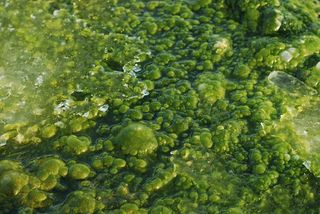INTRODUCTION TO ALGOLOGY (PHYCOLOGY)
- Algology is the science (gr. logos) of algae (L.algae). Phycology is the science (gr. logos) of algae (gr. phycos).
- This discipline deals with the morphology, taxonomy, phylogeny, biology, and ecology of algae in all ecosystems.

DISTRIBUTION OF ALGAE
- the distribution of alga is subject to floristic discontinuities caused by geographical options, like Antarctica, long distances of the ocean or general land plenty.
- It is thus attainable to spot species occurring by the neck of the woods, like “Pacific Algae” or “North ocean Algae”.
- after they occur out of their localities, it’s sometimes attainable to suppose a transport mechanism, such as the hulls of ships.
- instance, genus Ulva protistis genus reticulata and Ulva fasciata traveled from the solid ground to Hawaii during this manner.
- Mapping is feasible for choose species only: “there are several valid samples of confined distribution patterns.
- For example, Clathromorphum is Associate in Nursing arctic genus and isn’t mapped way south of there.
- On the opposite hand, scientists regard the general knowledge as too little thanks to the “difficulties of endeavour such studies alga are outstanding in bodies of water.
- The common in terrestrial environments and are found in uncommon environments, like on snow and on ice.
- Seaweeds grow largely in shallow marine waters, beneath a hundred metres (330 ft); but some are recorded to a depth of 360 metres the assorted kinds of alga play important roles in aquatic ecology.
- Microscopic forms that live suspended within the water column (phytoplankton) give the food base for many marine food chains.
- In terribly high densities (algal blooms) these alga could discolour the water and outcompete, poison, or asphyxiate different life forms.
- alga are multifariously sensitive to various factors, that has created them helpful as biological indicators within the Ballantine Scale and its modification.
- Most alga grow for good submerged, and are either connected (benthos) or free-floating (plankton).
- In recent waters the alga of the benthos grow on stones, twigs, and bigger aquatics, whereas the benthic seaweeds are nearly all lithophytes (i.e., mounted torocks) Few alga (Chara, Caulerpa) will get a grip in
- loose sand or mud, Associate in Nursinged a rock on a sandy beach typically stands coated with vegetation like an oasis during a desert.
THALLUS ORGANIZATION
- Siphonaceous forms. (A) Vaucherio. (B) Botrydium
- parenchymatous forms of algae vegetative cells divide in two or more planes and the products do no separate resulting in the formation of parenchymatous Thallus of various shapes Eg. Ulva, Sargassum
MULTICELLULAR ALGAE
- COENOBIUM: eg Volvox (motile), Hydrodictyon (non motile)
- PALMELLOID: eg Tetraspora
- DENDROID: eg. Chrysodendron
- Rhizopodial colony: eg. Chrysidiastrum
- Multicellular colonial forms of algae
COENOBIUM:
- of cells definite Arrangement of cells definite May be motile (eg Volvox) or non
- motile (eg. Hydrodictyon)
PALMELLOID:
- of cells not definite Arrangement of cells not definite Generalized production of
- mucilagenous mass eg. Tetraspora, Palmella Daug
D).COLONTAIGO:
(A) Motie Coenobium colony VoIvor)
(B) Non motle Conoblum colony Hydrodisyon
(C) Paimenoa colony.
DENDROID:
No and arrangement of cells not definite Cells united in branching manner by localized production of mucilagenous mass at the base of each cell eg. Chrysodendron
RHIZOPODIAL COLONY:
- Cells united through rhizopodia eg. Chrysidiastrum.
MULTICELLULAR FILAMRENTOUS FORMS ARE OF TWO TYPES :
UNBRANCHED:
(i)Free floating eg Spirogyra
(ii) Attached to some substratum eg. Ulothrix
(iii) Colonial eg. Nostoc
BRANCHED:
False eg. Scytonema
True: (a) Simple eg. Cladophora
(b) Heterotrophies eg Ectocarpus eg. Coleochaete
Pseudoparenchymatou: (a) Uniaxial eg. Batrachospermum
(b) Multiaxial eg. Polysiphonia.
Siphonaceous forms of algae multinucleate thallus without septation except during formation of reproductive organ eg. Vaucheria, Botrydium
